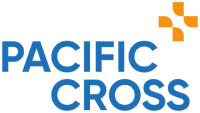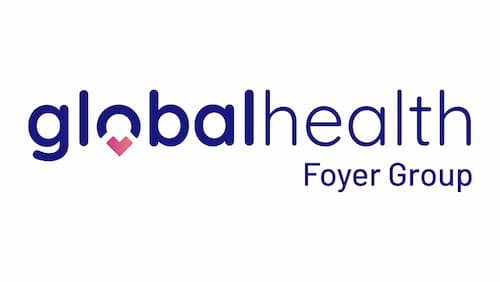Guide
International Health Insurance for Denmark
When considering health coverage for an expatriate life in Denmark, it’s crucial to understand the intricacies of the Danish healthcare system.
Denmark offers a commendable model of wellbeing abroad, with a comprehensive, tax-funded universal healthcare system that ensures medical services are accessible to all residents.
This system presents peace of mind for expatriates seeking international health insurance in Denmark, encompassing a range of health services from primary to specialist care.
Content of this page
Key Takeaways
- Denmark dedicates about 10.4% of its GDP to government healthcare expenditures, showcasing the nation’s commitment to public health.
- A significant 84% of these healthcare funds are sourced from regional and municipal taxes, illustrating a decentralised but cohesive healthcare system.
- In Denmark, healthcare availability is at a high standard, with approximately 3.4 doctors for every 1,000 residents.
- Hospital care receives robust financial support, with spending that exceeds the average for OECD countries, thereby reinforcing the infrastructure’s strength.
- Public health initiatives such as child vaccinations are highly successful, with coverage rates soaring over 90%.
- Denmark has achieved substantial progress in reducing mortality from heart disease and enhancing life expectancy, reflecting the efficacy of the healthcare services.
Understanding Denmark’s Universal Healthcare System
At the heart of Denmark’s health service delivery is a commitment to universal health coverage, ensuring that all Danish residents receive the necessary health care services without financial hardship. This system is deeply rooted in the principles outlined in the Danish Health Law, advocating for public insurance options that promote equitable access to a wide array of health services.
Decentralised Health Services and Coverage
Denmark’s healthcare model is marked by a decentralised structure, where the national government disperses funding to regions and municipalities. These local authorities are then responsible for providing an extensive range of health services, embodying the ethos of universal health coverage. With an online system storing patient data, medical professionals across Denmark—from doctors to pharmacists—can deliver coordinated and efficient care.
Public Versus Voluntary Complementary Insurance
The Danish healthcare landscape features a mixture of public and private institutions. While public healthcare covers medical assistance and hospital stays, it’s supplemented by voluntary private health insurance, such as those provided by Danmark Sygeforsikring, which approximately two million Danes use. With private health insurance costing around 130 DKK monthly, and employers frequently offering it as a perk, citizens can easily bridge any coverage gaps not addressed by public health care.
Gradual Development of Universal Coverage
Denmark’s journey to universal health coverage has been a gradual one, transitioning from non-governmental insurance options in the 1800s to the establishment of comprehensive public insurance in 1973. Since then, Danish Health Law has ensured continuous improvement in health service delivery, with three administrative levels—national, regional, and municipal—working in unison to promote the health of all citizens equally.
| Healthcare Feature | Details |
|---|---|
| Stay in Hospitals | Shortest in EU, with an average of four and a half days |
| Online Patient Data System | Accessible to all medical professionals for coordinated care |
| Mixed Healthcare System | Combination of public and private health institutions |
| Private Health Insurance Cost | Approximately 130 DKK/month (20 USD) for adults |
| Public Healthcare Coverage | Includes all medical assistance and hospital stays |
| Expenditure Financing | About 85% of healthcare expenses are funded by public monies |
| Health Expenditure in 2005 | Approx. 16.8 billion USD, 3,108 USD per capita |
Find the best International Health Insurance.
We scan the entire market of international health insurance providers and support you with our expert knowledge.







+ many other insurance providers
The Role of Public and Private Insurance in Denmark
In Denmark, the synergy between public health insurance and private health insurance Denmark constructs a healthcare system renowned for efficacy and widespread coverage. It is crucial for you to understand this dynamic as it reflects not only on immediate healthcare access but also on the long-term sustainability of healthcare funding. Remarkably, in 2014, a substantial 84.8% of health expenditure was channelled through public spending, showing a solid foundation built upon a progressive income tax structure.
Allocation and Funding of Healthcare Services
Funding and allocation of services within Danish healthcare are a model of a system where the roles are clear: the state uses its resources, largely derived from progressive taxation, to ensure healthcare funding is effectively directed where needed. With this, municipalities and regions dispense services and promote health, all within a framework that is largely publicly financed. These measures ensure the public health insurance system meets the needs of every resident without direct charges at the point of service.
Complementary and Supplementary Insurance Options
As needs evolve and expectations around healthcare adapt, so too does the concept of insuring health beyond the basics. The Danish landscape has seen a striking shift with the private health insurance market, particularly in the area of voluntary health insurance (VHI). From a mere 270,000 individuals covered in 1973, the number shot up to 2.3 million in 2014, signifying 41% of the population. This uptick is not incidental; it aligns with a growth spurt in employer-sponsored supplementary VHI following tax exemptions introduced in 2002.
Employers have been instrumental in this increase, with nine out of 10 people with supplementary VHI obtaining coverage through employer benefits—benefits that are made more attractive by the aforementioned tax exemptions. It’s clear then that the future of private health insurance Denmark hinges on the continuing appeal of these employer-sponsored plans—plans that are now in flux with the removal of tax exemptions in 2012 which could potentially diminish the demand for VHI.
Looking ahead, conversations around increased user charges could breathe new life into complementary VHI markets. However, such developments will inevitably circle back to the core question of whether the public system can maintain its high quality and short waiting times—factors that heavily influence the desirability of additional private insurance coverage in this Nordic nation.
Expert for international health insurance
- Tailor-made international insurance: As an insurance broker, we offer customized insurance packages that meet the needs and budgets of our customers.
- Independent advice and selection: We offer independent advice and can select from a wide range of insurance providers to find the best solutions for our clients.
- Client-focused support: Our dedicated team is on hand to provide our clients with personal advice and support in selecting, managing and optimizing their insurance cover.
- Many years of industry experience and expertise: Our many years of experience and expertise enable us to offer our clients sound advice and customized solutions based on a deep understanding of the insurance industry.
- Innovative technology and digital services: We use innovative technology and digital platforms to provide our customers with convenient and transparent access to insurance information and services.
How to reach us
We advise you Monday to Friday from 8 a.m. to 6 p.m.
Or book a free web meeting
- Calculation of all costs live and via screen sharing
- Get to know us personally, live and in colour
Healthcare Services Covered Under Denmark’s System
Denmark is renowned for its efficient healthcare system, ensuring full coverage for various essential healthcare services that collectively contribute to the well-being of the Danish population. This full coverage extends comprehensively to include primary care, specialist care, and hospital services, which are crucial components of the robust Danish healthcare system. In a country where healthcare expenditures have a significant footprint at approximately 10.4% of the GDP, the commitment to health is evident.
Full Coverage for Primary and Specialist Care
In Denmark, there’s a strong emphasis on the accessibility of primary care and specialist care, with around 84% of healthcare expenditure being funded by governmental or compulsory means. For the Danish citizen, this means reassurance and certainty in receiving necessary healthcare services without the additional burden of cost-sharing. A nation with about 3.4 doctors per 1,000 inhabitants, Denmark meets the healthcare needs of its people, from general health checks to complex specialist interventions.
Partial Coverage and Subsidies for Additional Services
Aside from the fully covered services, subsidies play a crucial role in bridging the gap where only partial coverage is available. Services such as outpatient prescription drugs, adult dental care, and physiotherapy are subsidised, thus alleviating the financial pressure on individuals. Notably, the Danish municipalities are also deeply involved in providing home care and preventive services for younger demographics, ensuring a wide-spanning healthcare approach.
| Statistic | Data | Remarks |
|---|---|---|
| Hospital Bed Availability | 2.5 per 1000 people | Reflects hospital capacity |
| Hospital Spending | 43% of total healthcare spending | Indicates focus area |
| Vaccination Coverage | Over 90% | Essential for child health |
| Decrease in Heart Disease Mortality | Noticeable decline before 2015 | Shows improvement over time |
| Life Expectancy | Rising | Indicator of healthier population |
| Per Capita Healthcare Expenditure (2016) | $5205 | High investment in health |
Overall, an understanding of Denmark’s dedication to providing healthcare services with full coverage and nuanced subsidies confirms its reputation as having one of the best healthcare systems in the world. The Danish model exemplifies that generous funding and efficient resource allocation can create a health system that supports the needs of its citizens across various stages of care.
Cost-Sharing and Out-of-Pocket Expenses in Danish Healthcare
As you navigate the landscape of healthcare in Denmark, it’s important to be aware of the costs that may be incurred beyond public coverage. Despite Denmark’s largely publicly funded healthcare system, certain services necessitate cost-sharing, a financial contribution from you alongside what the government subsidises. This structure primarily touches upon adult dental care and outpatient prescription drugs, where a portion of the fees falls under personal responsibility, emphasising the balance between comprehensive coverage and sustainable healthcare spending.
Cost-sharing for Adult Dental and Outpatient Prescriptions
The cost-sharing framework within the Danish healthcare system ensures that while most medical services are freely accessible, there are areas where out-of-pocket expenses are anticipated. In 2019, such direct expenses constituted about 14.17% of the total health expenditure, a figure aligned closely with the EU average. Specifically, when you seek services like adult dental care or require outpatient prescriptions, you should be prepared for these coinsurance costs, which are part of broader efforts to manage national healthcare expenditure and resource utilisation effectively.
Safety Nets and Subsidy Scheme Structures
Denmark’s healthcare model provides a safety net through subsidy schemes and cost-sharing caps to mitigate out-of-pocket expenses and ensure healthcare remains affordable for all. Should you require extensive services, such as long-term residential care or temporary home care, municipalities offer means-tested subsidies, exemplifying the social safety nets in place. With the public share of health spending reaching 84% in 2016, Denmark’s approaches to healthcare financing exemplify its commitment to fostering a system that prioritises your health and financial wellbeing.
FAQ
What types of international health insurance are available in Denmark?
In Denmark, there are various options for international health insurance catering to expatriates. These include local private health insurance plans, international health insurance policies, and travel health insurance. These are in addition to the comprehensive public healthcare system that expatriates can access once they become residents.
How does the Danish healthcare system work for expatriates?
Expatriates in Denmark are entitled to register for the national universal health coverage upon obtaining a residence permit and CPR number. This allows them access to the same health services as Danish citizens, which includes primary care, specialist treatment, and hospital care. Expatriates can also opt for additional private insurance for services not fully covered by the public system.
Can you explain the difference between public and private health insurance in Denmark?
Public health insurance in Denmark is funded through progressive income tax and provides comprehensive coverage for a range of healthcare services. Private health insurance, on the other hand, can be used as a supplement to cover services not fully included in the public system, such as certain dental treatments, or to give access to private healthcare providers.
What does Denmark’s decentralised health service delivery mean?
Denmark’s decentralised health service delivery means that the responsibility for healthcare services is divided among regions and municipalities, rather than being centrally organised. This ensures that services are tailored to the specific needs of local populations and that access to healthcare is equitable across the country.
What is the history behind the development of universal coverage in Denmark?
Universal health coverage in Denmark has its origins in non-governmental insurance systems in the 1800s. Over time, these evolved into a comprehensive public healthcare system, with the current framework being established legislatively in 1973. This system was designed to ensure that all residents of Denmark have access to necessary healthcare services.
How are healthcare services funded in Denmark?
Healthcare services in Denmark are predominantly publicly funded, with the majority of the financing coming from taxes. Regions and municipalities receive block grants based on population demographics and needs, and are responsible for organising service delivery and promoting public health.
What healthcare services are fully covered under Denmark’s public healthcare system?
Denmark’s healthcare system offers full coverage for a wide range of services, including primary and specialist care, hospital treatments, mental health services, and long-term care, at no cost to the resident. This means that for these services, there is no direct payment or cost-sharing involved.
Are there any medical services that are not fully covered by the public system?
While Denmark’s public healthcare system is extensive, there are some services that are not fully covered, such as adult dental care, outpatient prescription drugs, and physiotherapy. These services are subsidised and may require a co-payment from the patient.
What kind of cost-sharing measures exist in the Danish healthcare system?
In Denmark, certain healthcare services require cost-sharing, where patients pay a portion of the cost. This applies to services like adult dental care and outpatient prescription medication. However, there are subsidy systems and out-of-pocket spending caps in place to ensure that these expenses remain affordable for all residents.
Are there any financial safety nets for those who cannot afford healthcare in Denmark?
Absolutely. Denmark has several financial safety nets and subsidy schemes. For example, there are systems in place to help cover the cost of long-term care for the elderly, which are means-tested at the municipal level. Subsidies are also available to ensure that high healthcare costs don’t lead to financial hardship for any resident.
Individual offer for international health insurance
Expert knowledge, access to exclusive concepts and independent advice.
International Health Insurance Provider
- Market
- Medicare
- Mawista
- McGill
- Morgan Price
- PolicyBazaar
- Students in France
- Tata AIG
- UnitedHealthcare
- VHI
International Health Insurance by Place of Residence
A
- Algeria
- Andorra
- Angola
- Anguilla
- Antigua and Barbuda
- American Samoa
- Argentina
- Armenia
- Aruba
- Australia
- Austria
- Albania
- Azerbaijan
B
- Bangladesh
- Bahamas
- Bahrain
- Belize
- Benin
- Bermuda
- Belgium
- Barbados
- Bhutan
- Bolivia
- Botswana
- Bosnia and Herzegovina
- Brazil
- Brunei
- British Columbia
- British Virgin Islands
- British Indian Ocean Territory
- Burkina Faso
- Burundi
C
- Canada
- Cambodia
- Cape Verde
- Cayman Islands
- Chad
- Chile
- China
- Christmas Island
- Colombia
- Cocos Island (Keeling)
- Comoros
- Cook Islands
- Costa Rica
- Curaçao
- Cyprus
- Czech Republic
D
E
F
- Falkland Islands (Malvinas)
- Faroe Islands
- Federated States of Micronesia
- Fiji
- Finland
- French Guiana
- French Polynesia
G
- Gambia
- Georgia
- Gibraltar
- Germany
- Greece
- Grenada
- Ghana
- Guadeloupe
- Guam
- Guatemala
- Guinea
- Guinea-Bissau
- Guyana
H
I
J
K
L
N
M
- Malaysia
- Macau
- Madagaskar
- Malawi
- Maldives
- Malta
- Marshall Islands
- Martinique
- Mauritius
- Mayotte
- Moldova
- Monaco
- Mongolia
- Montenegro
- Montserrat
- Morocco
- Mexico
- Mozambique
N
- Namibia
- Nauru
- Nepal
- New Caledonia
- Nicaragua
- Niue
- Norfolk Island
- North Macedonia
- Northern Mariana Islands
- Norway
O
P
- Pakistan
- Palau
- Panama
- Papua New Guinea
- Paraguay
- Peru
- Pitcairn Islands
- Philippines
- Poland
- Portugal
- Puerto Rico
Q
R
S
- Saudi Arabia
- Saint Martin
- Saint-Barthélemy
- Samoa
- San Marino
- São Tomé and Príncipe
- Senegal
- Serbia
- Seychelles
- Sierra Leone
- Sint Maarten
- Singapore
- Slovakia
- South Africa
- Solomon Islands
- South Korea
- South Sandwich Islands
- St. Kitts and Nevis
- St. Lucia
- St. Vincent and the Grenadines
- Suriname
- Svalbard and Jan Mayen
- Spain
- Sri Lanka
- Sweden
- Switzerland
T
- Taiwan
- Tajikistan
- Tanzania
- Togo
- Tokelau
- Tonga
- Trinidad and Tobago
- Tunisia
- Turks and Caicos Islands
- Tuvalu
- Thailand
- Turkey
U
V
W
Z
Everything you need to know about international health insurance
How to get in touch
We are available for you from Monday to Friday from 8 a.m. to 6 p.m.
Or book a free webmeeting
- Calculation of all costs live and via screen sharing
- Get to know us personally, live and in color







